Boat Navigation Light Requirements for Canadian Waters
Navigation lights are essential safety features on boats, helping vessels see and be seen during nighttime or low-visibility conditions. They indicate a boat’s position, direction of travel, and type, allowing other boaters to determine who has the right of way and how to avoid collisions.
A typical powerboat displays a red light on the port (left) side, a green light on the starboard (right) side, a white masthead light and a stern light visible from behind. Sailboats under sail only show the same red and green sidelights, along with a white stern light, but no masthead light. When under engine power, they must display lights like a powerboat.
All-around white lights are used on smaller boats or when anchored, visible from every direction.
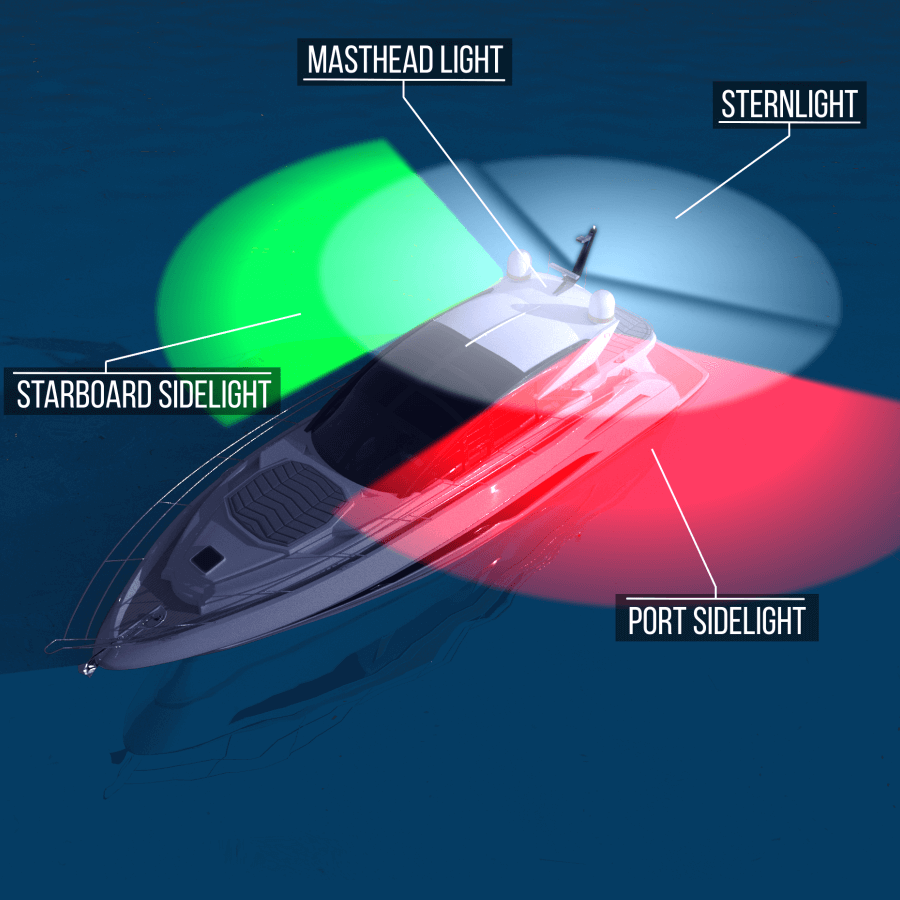
Properly using navigation lights is required by law and ensures safe night navigation, allowing all vessels to communicate their presence and movement clearly on the water.
Powerboats navigation lights at night
Navigation lights for powerboats less than 12 meters (39,4") in length
A power driven vessel of less than 12 meters in length, and underway, may display, from sunset to sunrise:
-
All-round light (white) forward and,
-
Sidelights (red – green).
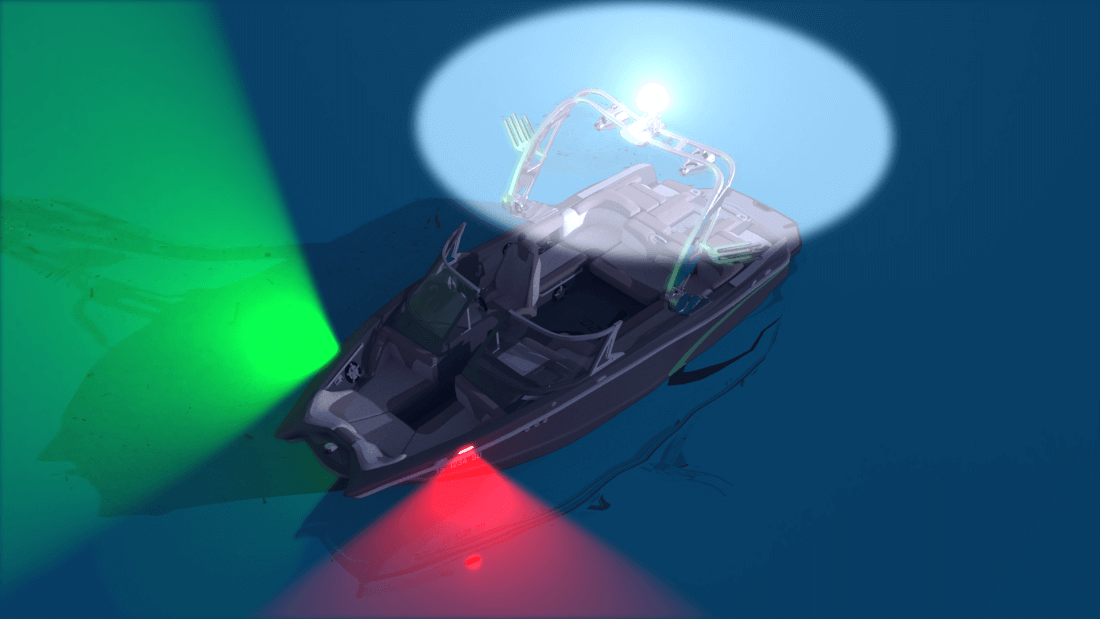
Navigation lights for powerboats of 12 meters (39,4") and over in length
A power driven vessel of 12 meters and over in length, and underway, may display, from sunset to sunrise:
-
Masthead light (white) forward,
-
Sternlight (white) and,
-
Sidelights (red – green).
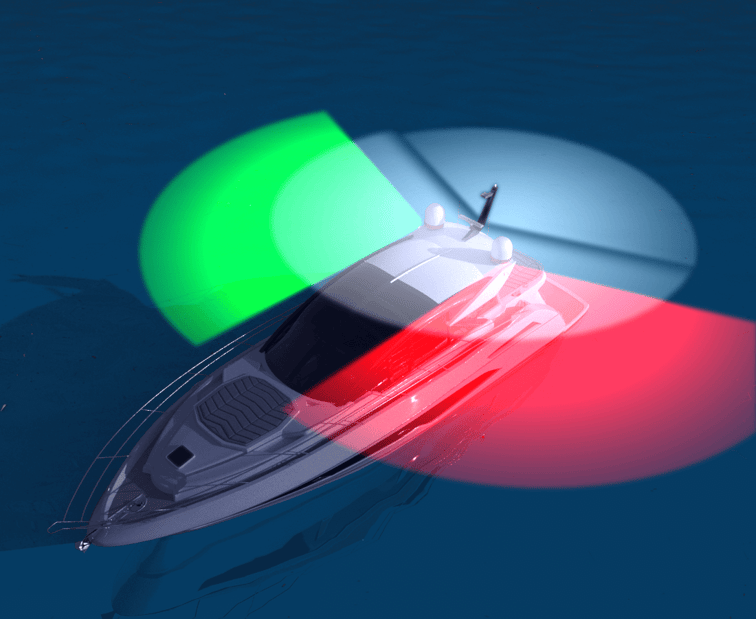
Navigation lights for powerboats at anchor
At anchor, the operator of a pleasure craft shall display, from sunset to sunrise, in the fore part, an all-round light. A powerboat anchored at night must display an all-round light.
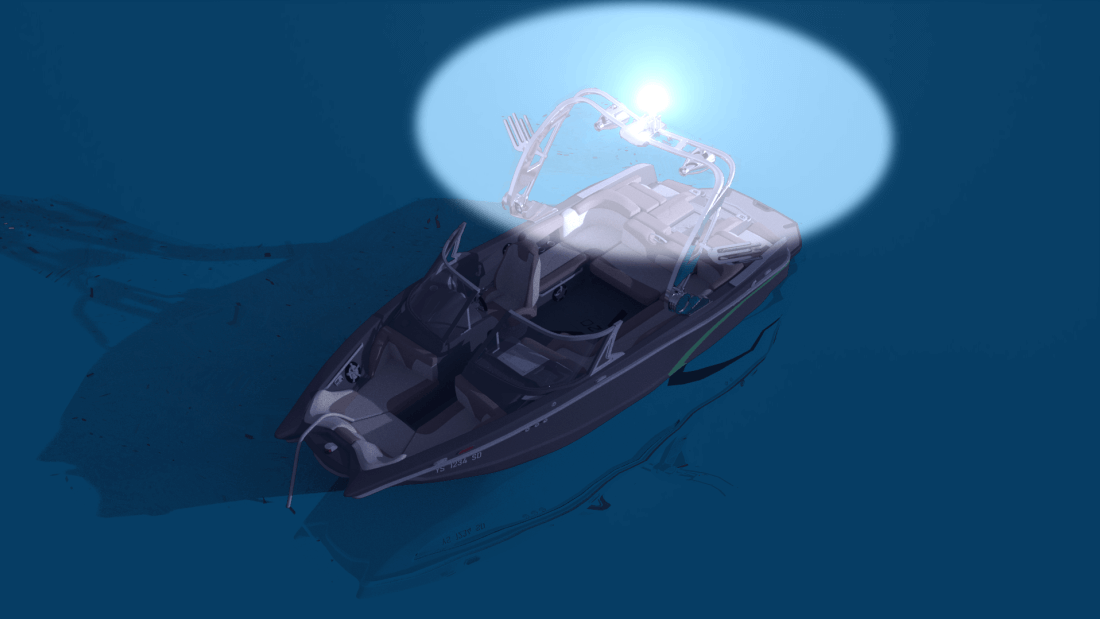
What is a properly lit sailboat at night?
Navigation lights for sailboats under 7 m (23’)
and underway, may display, from sunset to sunrise:
-
Sidelights (red – green) and,
- Sternlight (white).
OR
- 1 lantern, combining the sidelights and stern light above.
OR
- 1 white-lighted electric torch or lantern that you must use far enough ahead of time to avoid a collision.
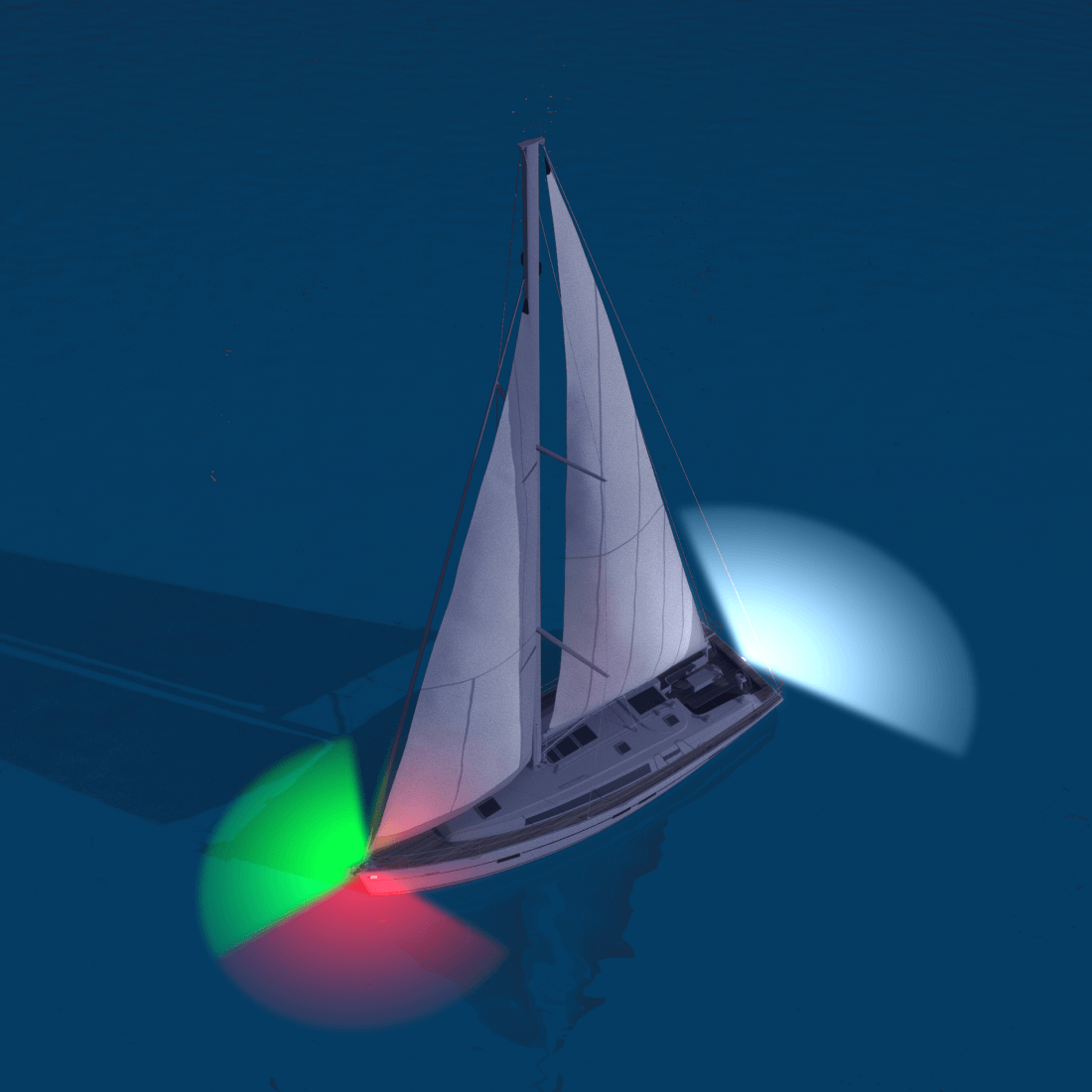
Navigation lights for sailboats from 7 m (23’) to under 20 m (65’7”)
- Sidelights
- Sternlight, and
OR
- 1 lantern, combining the sidelights and stern light above
Option 1

Option 2
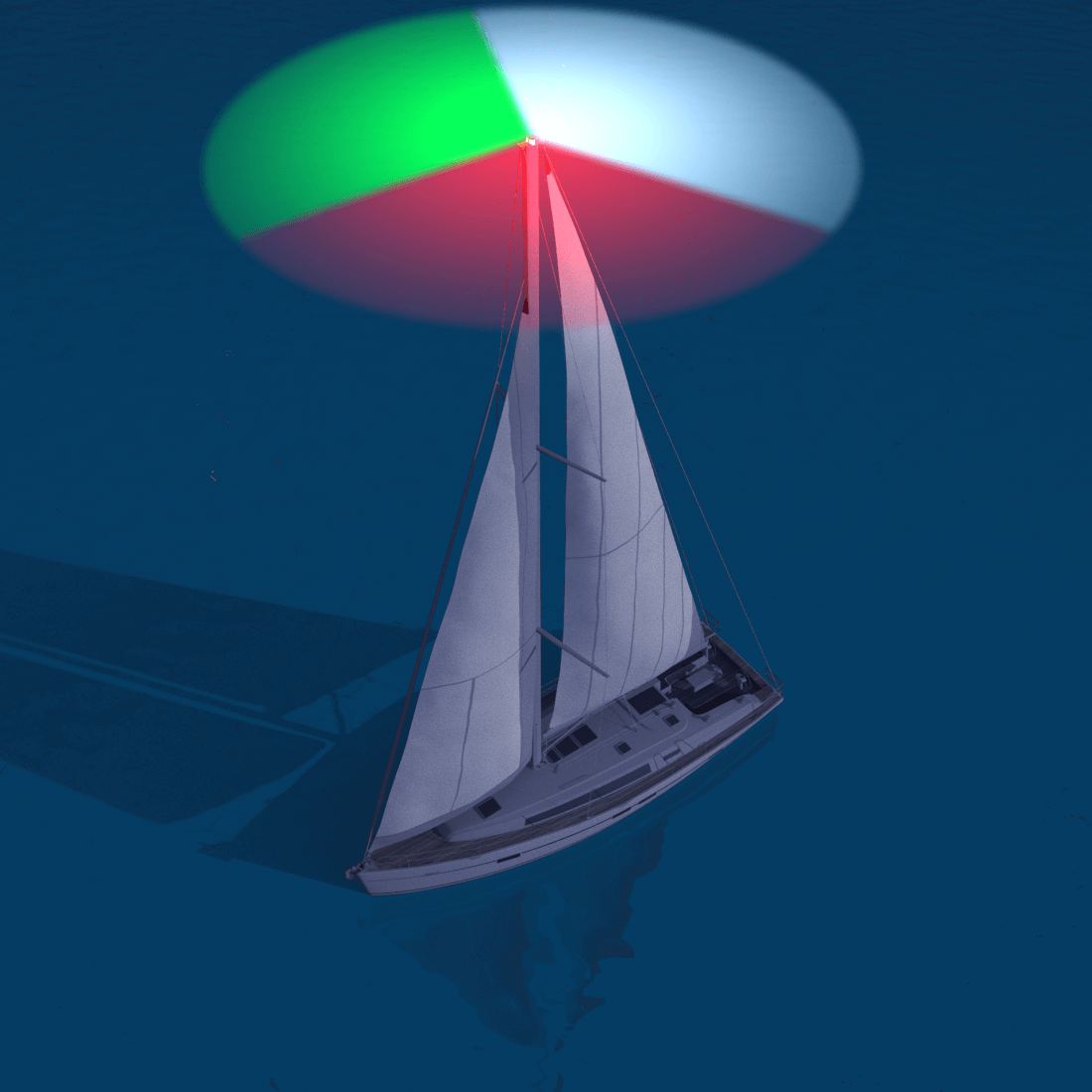
Option 3
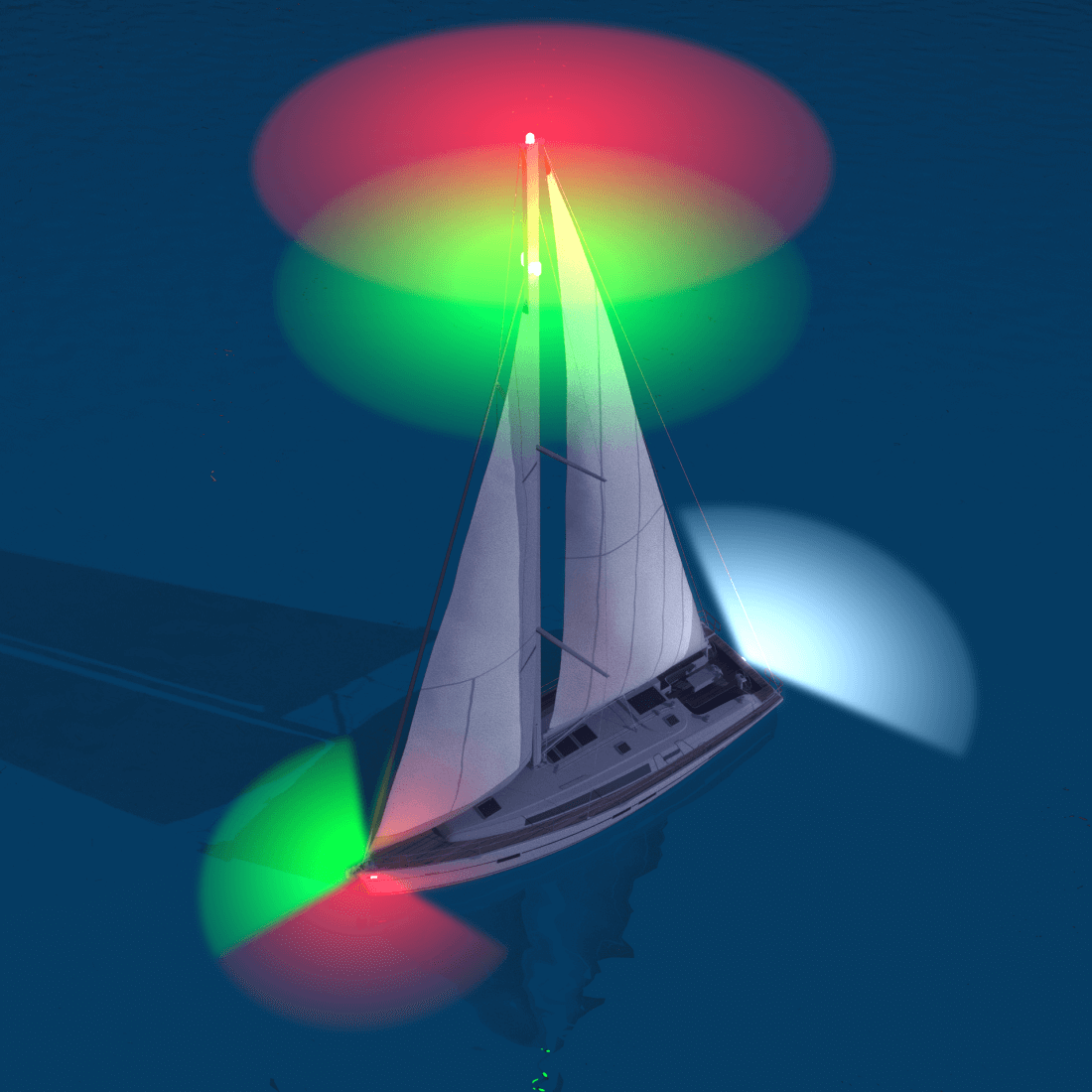
Optional - A sailing vessel may exhibit at or near the top of the mast, two all-round lights in a vertical line: the upper one red and the lower one green. These lights are shown along with the sidelights and sternlight.
Navigation lights for sailboats 20 m (65’7”) and over
-
Sidelights (red – green) and,
-
Sternlight (white).
Option 1

Option 2

Optional - A sailing vessel may exhibit at or near the top of the mast, two all-round lights in a vertical line: the upper one red and the lower one green. These lights are shown along with the sidelights and sternlight.
Navigation lights for sailboats operating under motor power
Sailboats are considered powerboats when they have the engines on - even if the sails are up.
-
Sidelights (red – green) and,
-
Masthead light (white) forward,
-
Sternlight (white).
Navigation lights for sailboats at anchor
At anchor, the operator of a pleasure craft shall display, from sunset to sunrise, in the fore part, an all-round light. A powerboat anchored at night must display an all-round light.
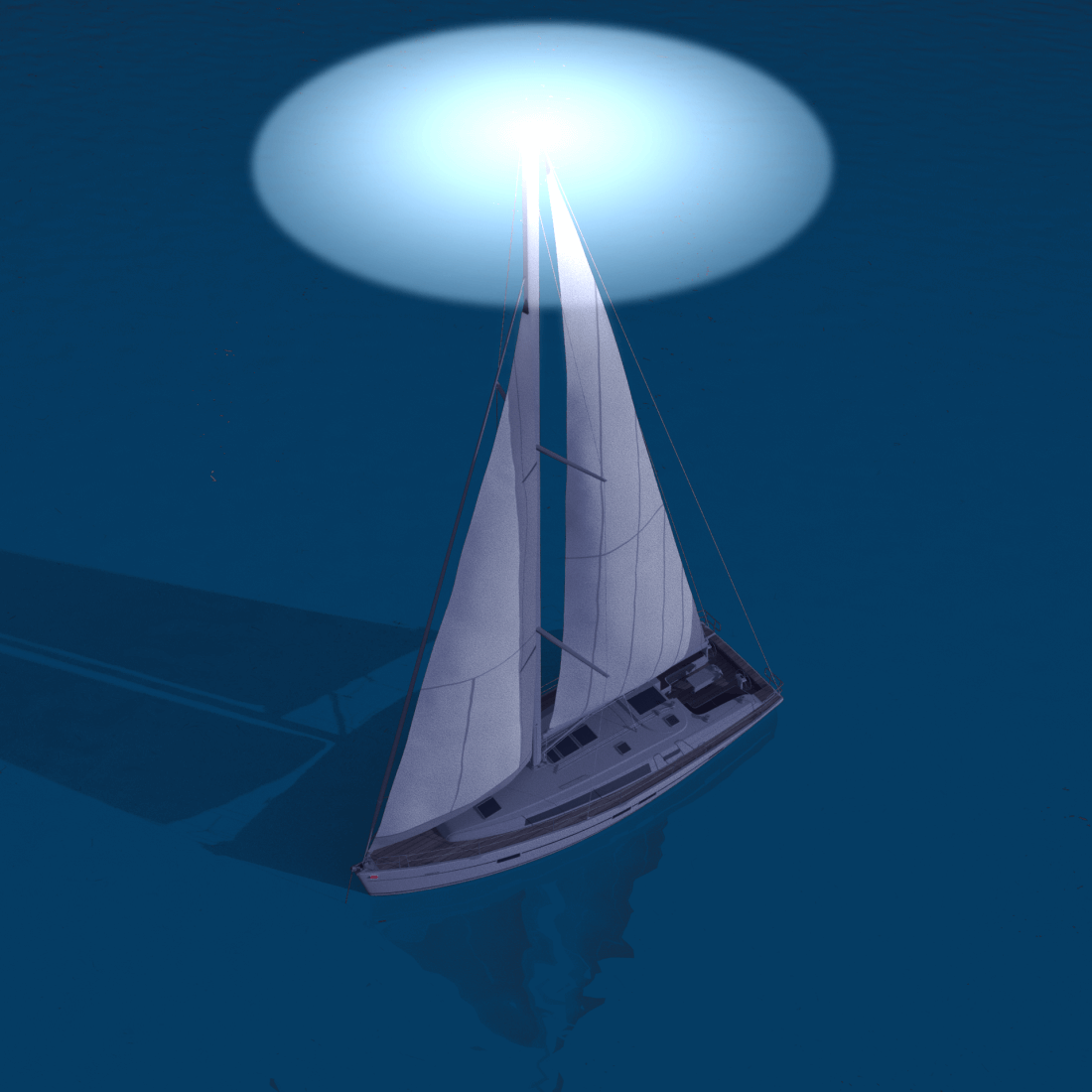
Navigation lights for kayak or canoe (human-powered vessels) at night
Navigation lights are also required for human-powered vessels (canoe, kayak) or for a sailing pleasure craft of less than 7 meters in length not under power. When underway, the operator shall, from sunset to sunrise, display, if practical, sidelights and a stern light, but if the operator cannot, he/she must have at hand, a flashlight or lighted lantern emitting a white light which must be lit in enough time to prevent a collision.
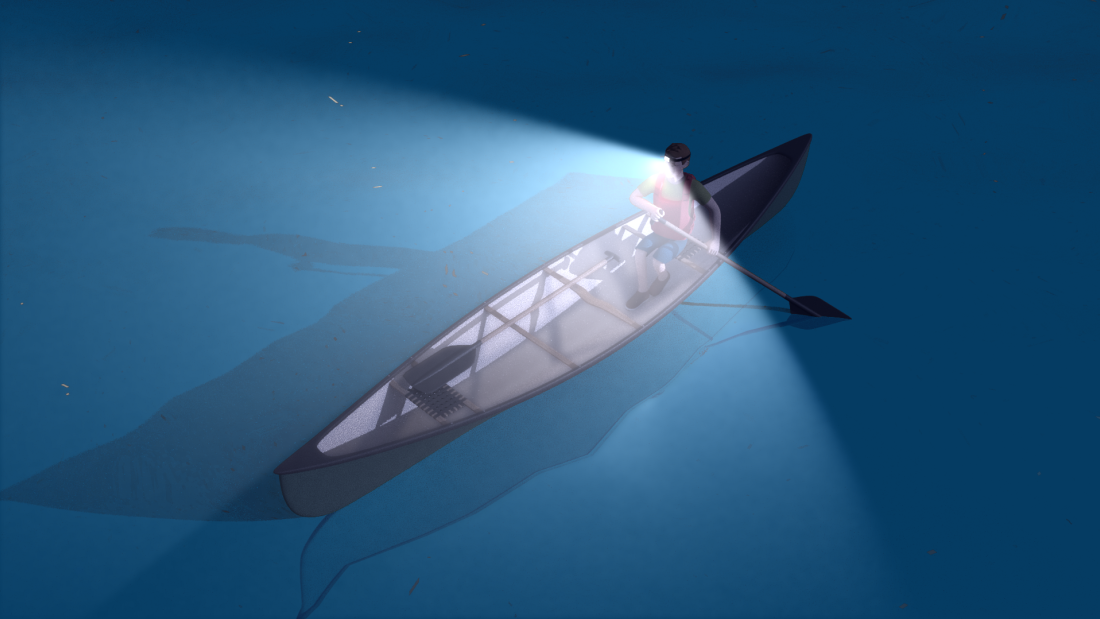
Commercial boats navigation lights at night
Navigation lights for a vessel engaged in fishing
-
Sternlight and
-
All-around light in a vertical line, the upper being red over white light. When making way through the water.
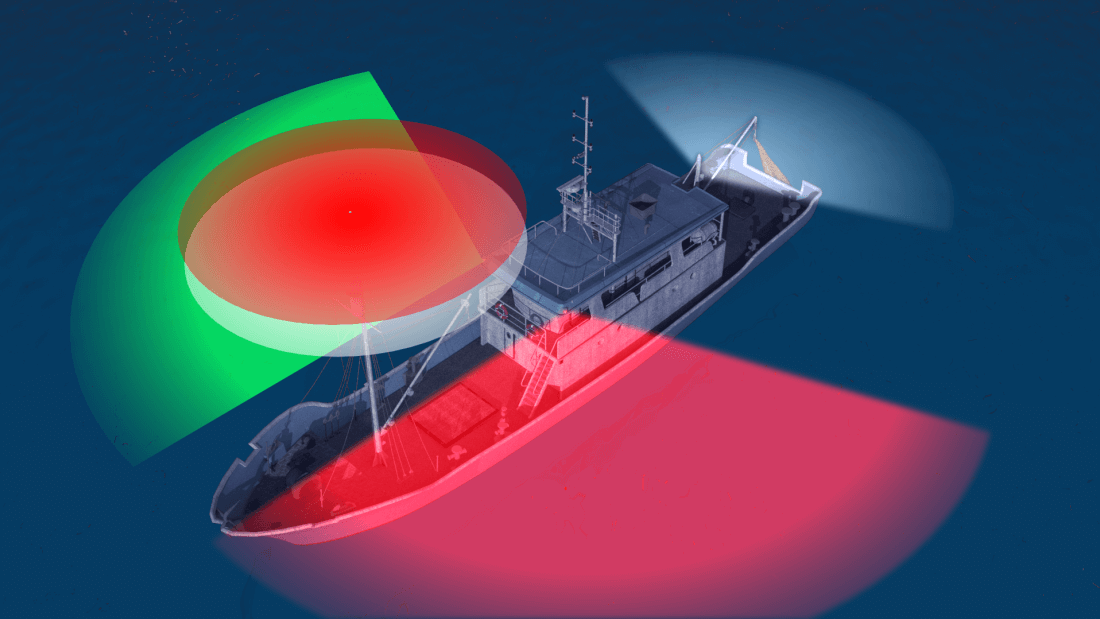
Navigation lights for a vessel engaged in trawling
A vessel when engaged in trawling, which means dragging a dredge net or other fishing apparatus through the water, shall display:
-
Two all-round lights in a vertical line, the upper being green and the lower white. When making way through the water,
-
Sidelights and
-
Sternlight.
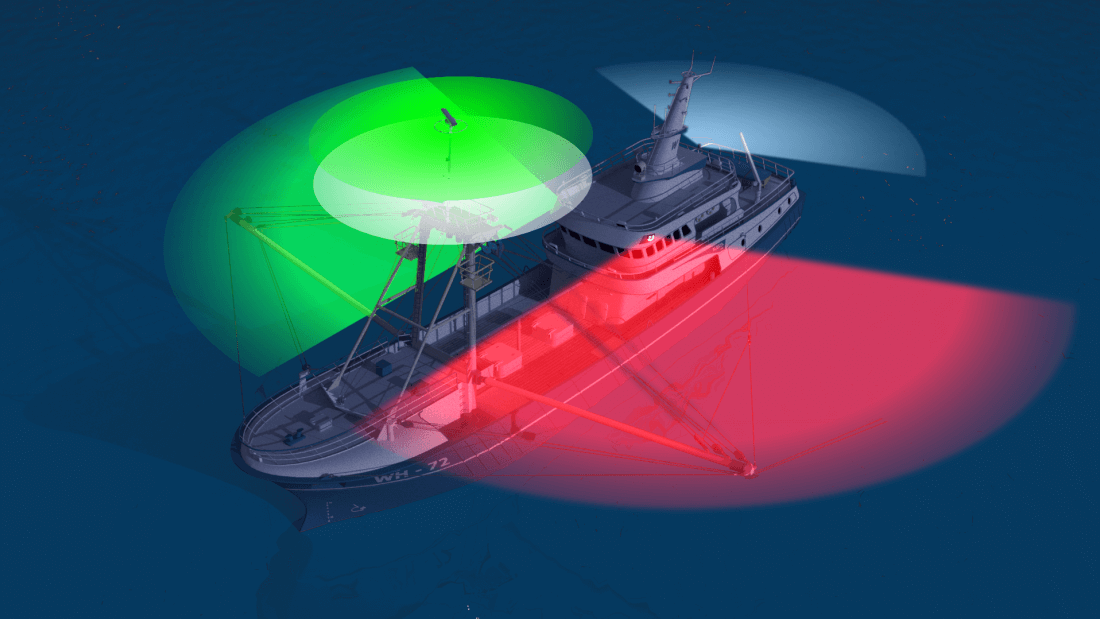
Navigation lights for a government vessel (Police boat)
Any government vessel or any vessel that is owned or operated by a harbor, river, county or municipal police force may display a blue flashing light to identify itself as such, in the following cases
-
When it is providing assistance in any waters to any vessel or other craft;
-
When it is engaged in law enforcement duties in Canadian waters.
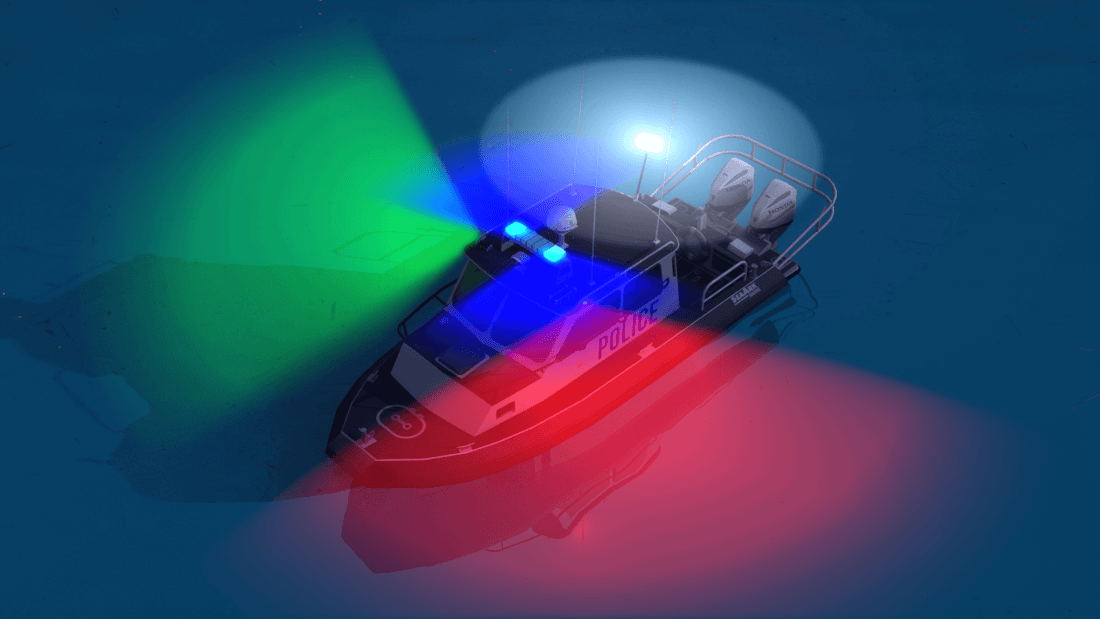
Navigation lights for a power-driven vessel when towing
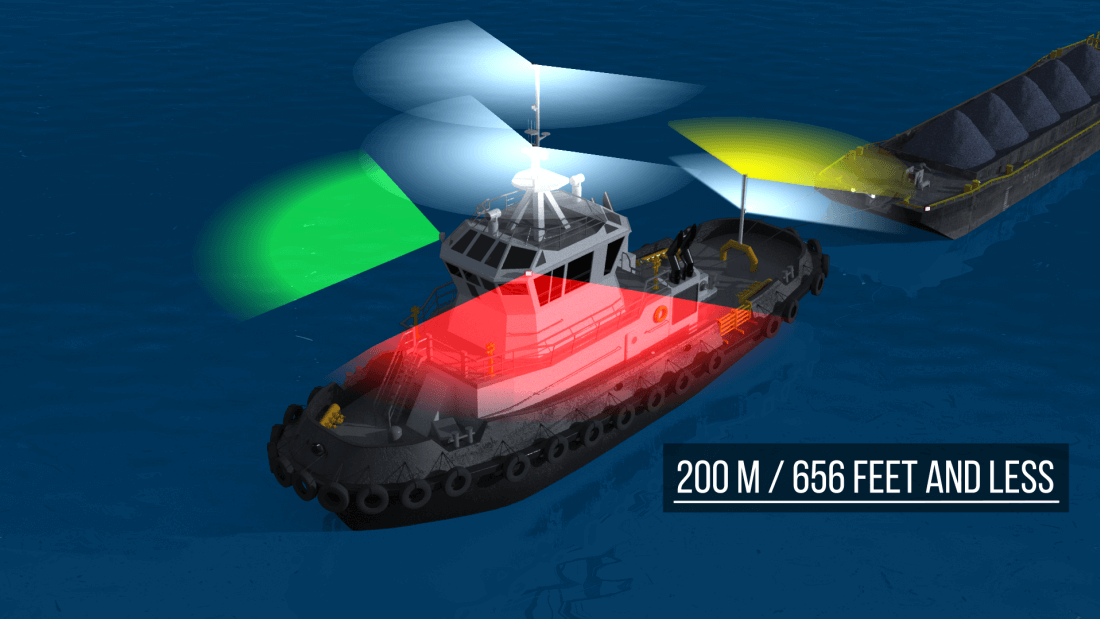
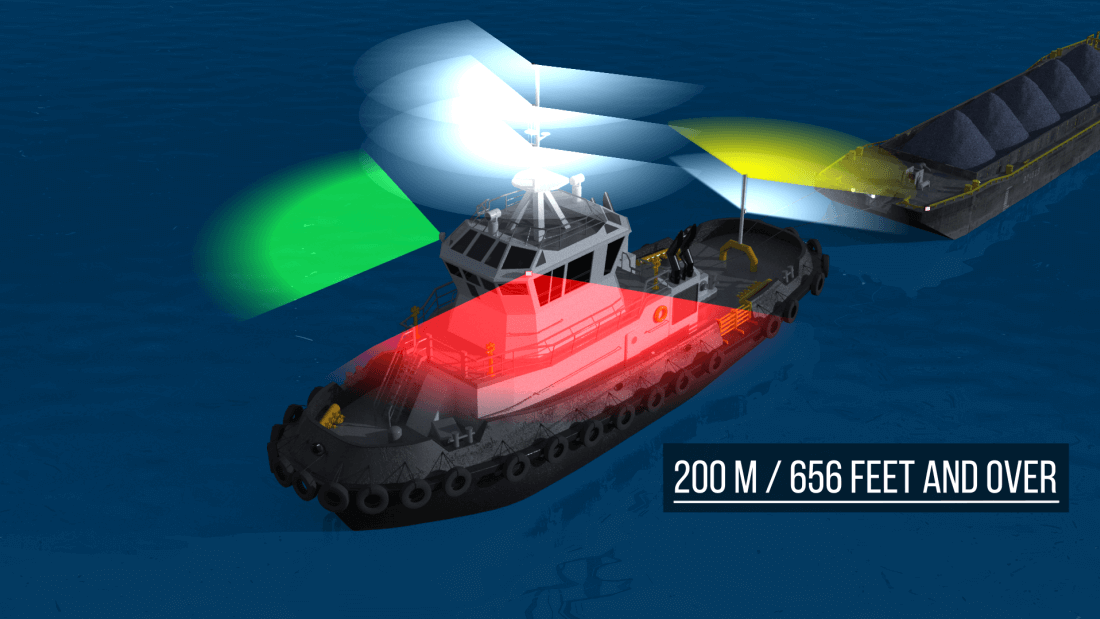
Power-driven vessel when towing shall show sidelights, a sternlight, and a towing light in a vertical line above the sternlight, and two masthead lights in a vertical line. When the length of the tow, measuring from the stern of the towing vessel to the after end of the tow exceeds 200 meters, three such lights in a vertical line shall be displayed.
Apart from the regular navigation lights, when a boat tows another vessel in distress or in need of assistance for any reason, shall take all possible measures to show the relation between the towed vessel and the vessel doing the towing. A vessel towing must try to shine a light on the towing cable to make it as visible as possible, so that other boats do not come into contact with the cable.
A vessel being tow shall display sidelights and a sternlight. If it is not possible, it must display one all-around white light at each of the fore and aft ends.
Navigation lights for a power-driven vessel pushing another
A power-driven vessel, when pushing another, shall display the sidelights, a sternlight, and two superimposed masthead lights.
The vessel being pushed, and not part of a composite unit, must display its sidelights at the bow. When a vessel is pushing another, if both are connected in a rigid, composite unit, they will be regarded as one unit, thus showing the appropriate lights.
Navigation lights Examples
Sailing vessel seen from starboard side
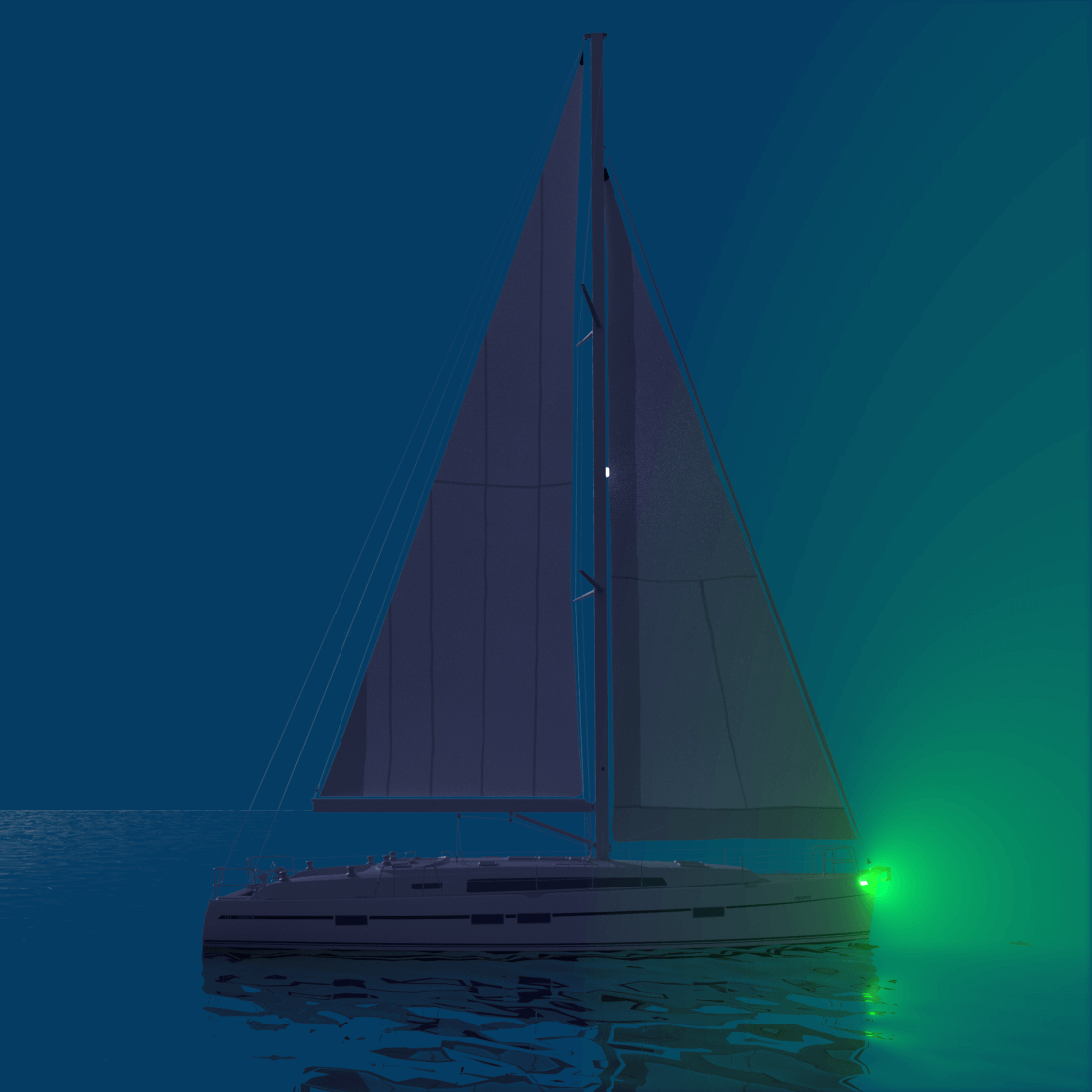
Sailing vessel seen from the front
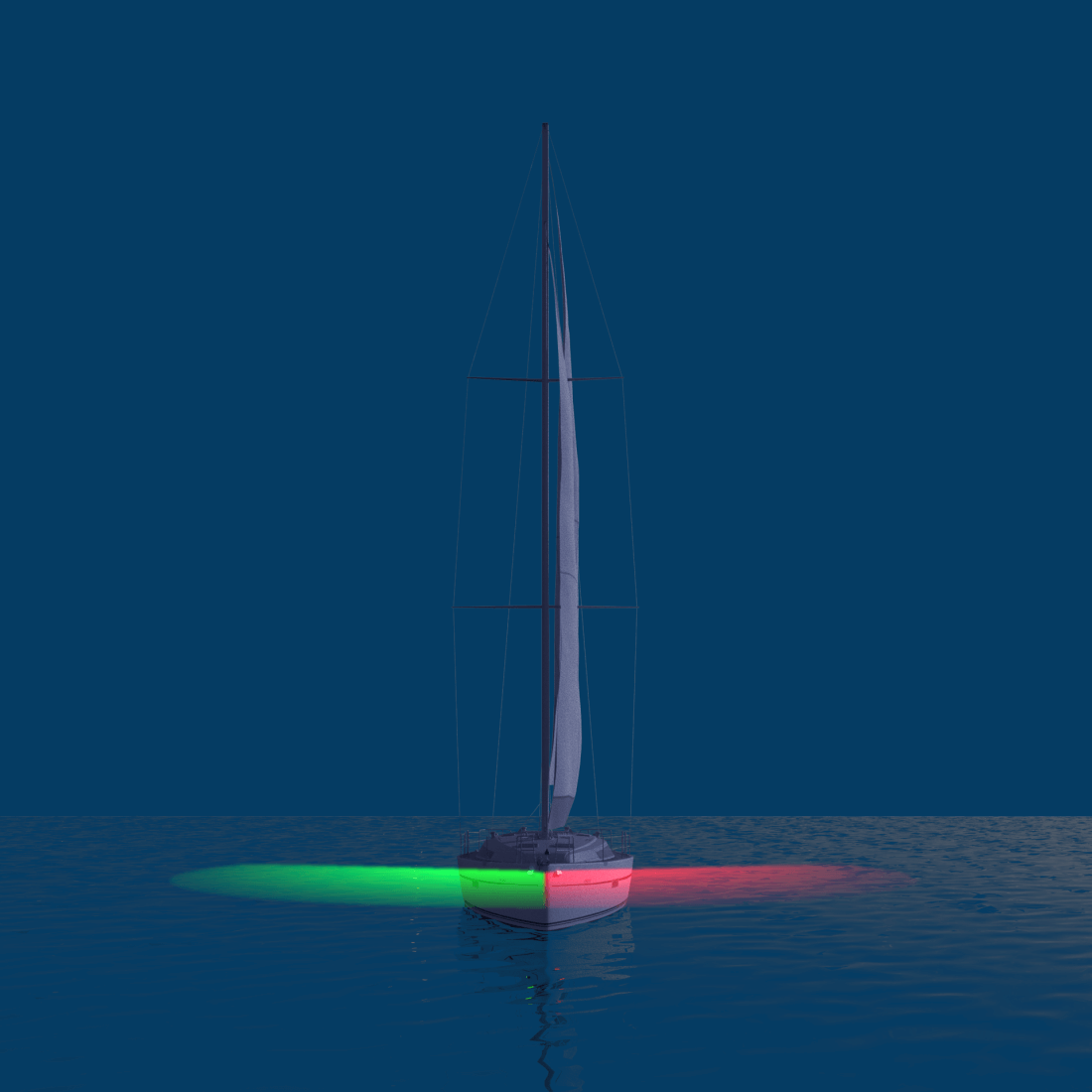
Power-driven vessel anchored

Power-driven vessel seen from starboard side
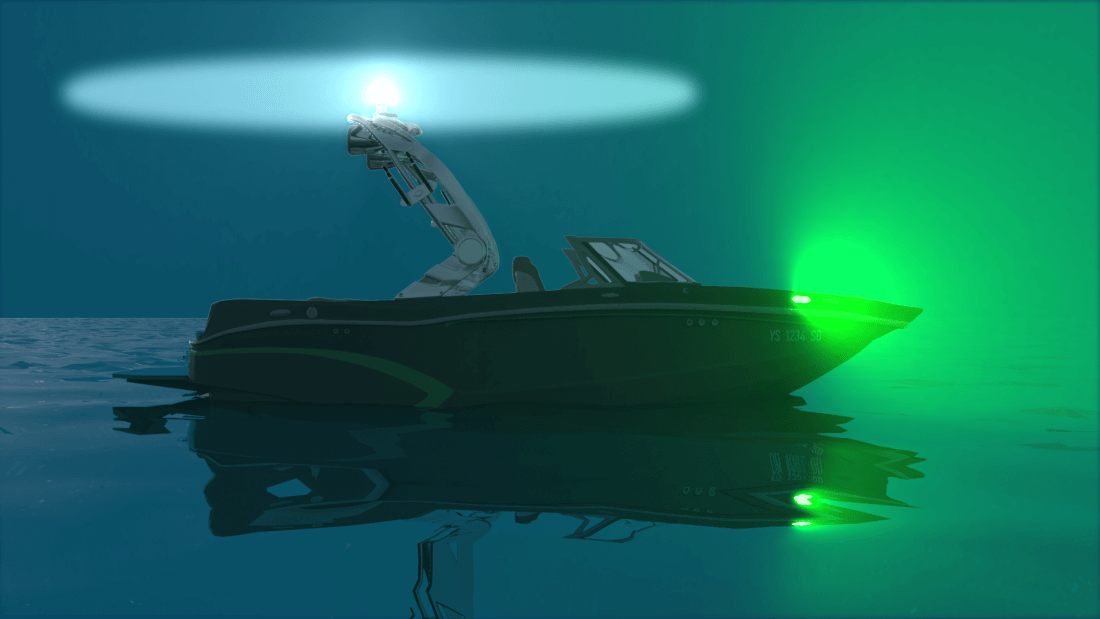
Power-driven vessel seen from port side
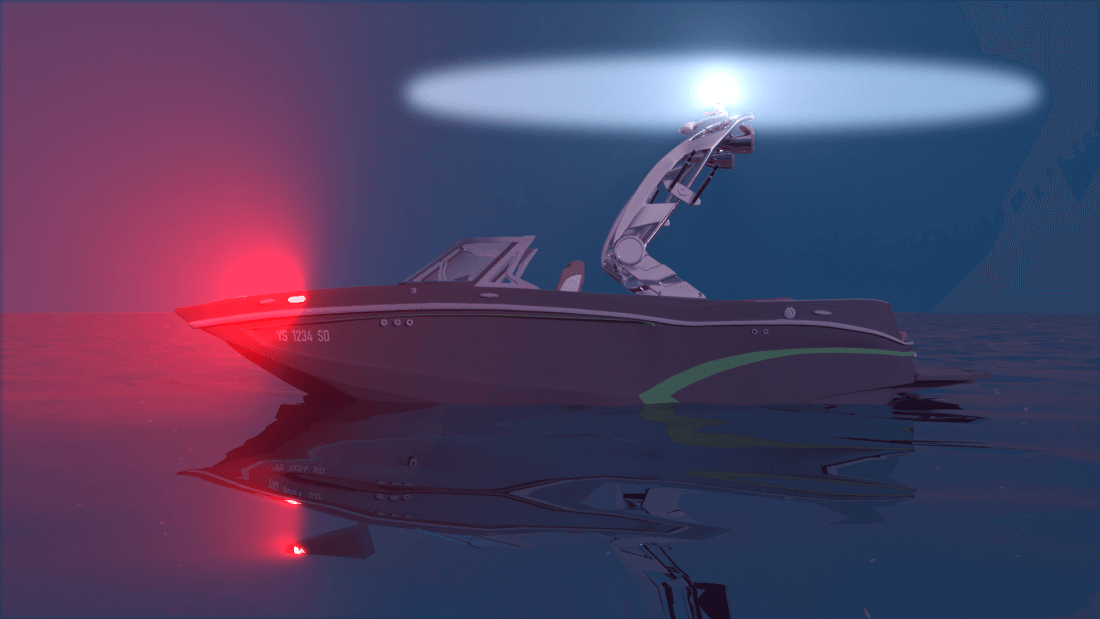
Power-driven vessel seen from the stern (back)
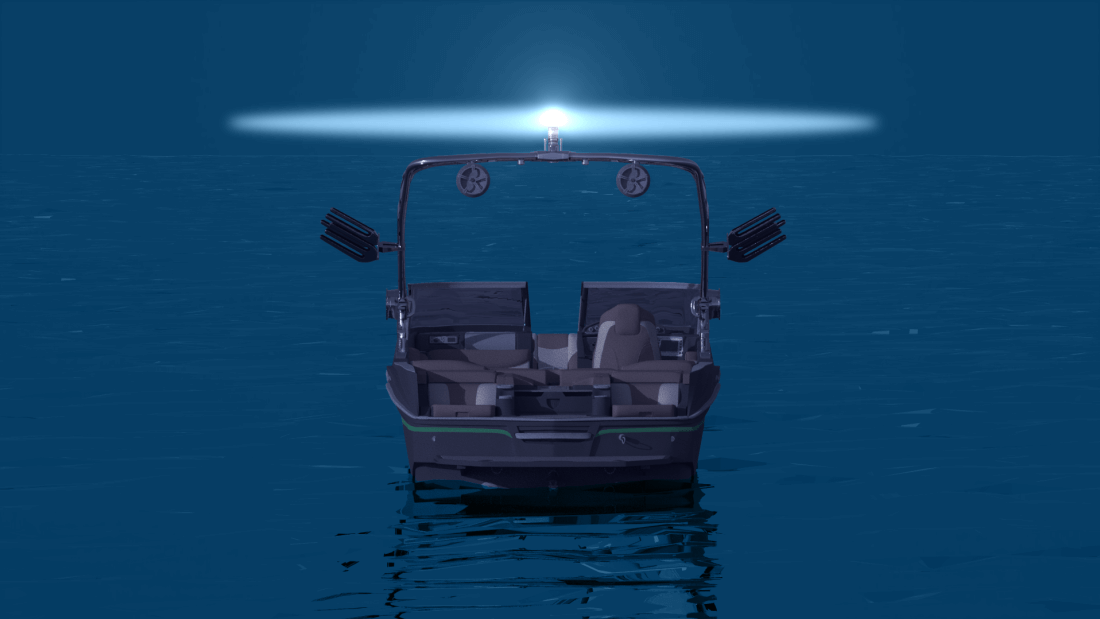
Would you like to learn more about boating safety and be able to drive a boat?
Aceboaters' boating safety course is accredited by Transport Canada to train students on the rules of navigation, buoys and their meanings, boating navigation lights, hazards, how to respond to emergency situations, boating laws and more.
Our course, once successfully completed, will give you the official pleasure craft operator card from Transport Canada, valid throughout North America.
I want my official Canadian boating license.
